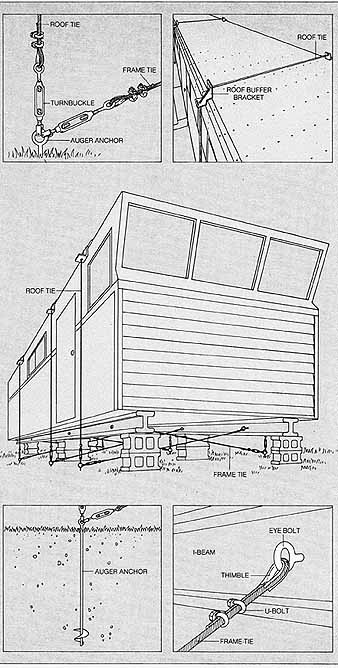Perched on its I-beam undercarriage, a mobile home is imperiled by all kinds of windstorms. A hurricane or tornado can lift the home right off its footings unless it's secured with metal cables or straps that tie the undercarriage to the ground. and because such a home is generally off-balance—with all the heavy appliances strung along one wall—even a 50- mile-an-hour gale can roll it over unless there are additional ties across the roof.
Mobile homes are now manufactured with invisible roof ties built in under the top surface and with frame-tie cables attached to the I-beams, all ready to be fastened to turnbuckles and anchored. For older homes, the roof ties must be hung over the outside of the structure and rings must be welded to the beams— or holes for eyebolts drilled into the beams (bottom, right) —to provide a place to fasten the frame ties. The cables are held by concrete posts or by auger anchors—large metal rods with screw ends that are turned into the ground, gripping it firmly. Most homes must have at least two roof ties, located no more than 5 feet from each end, plus a pair of frame ties for every 10 feet or so of over all length. In areas where high winds are frequent, roof ties should be matched to frame ties at 10-foot intervals.

A wind-proofed home. A properly protected mobile home is held by
turnbuckle-adjusted cables that run over buffer brackets on the roof or through
eyebolts in the undercarriage before being secured to augers set into the
ground.
Next: Chimney Ties for Earth Tremors